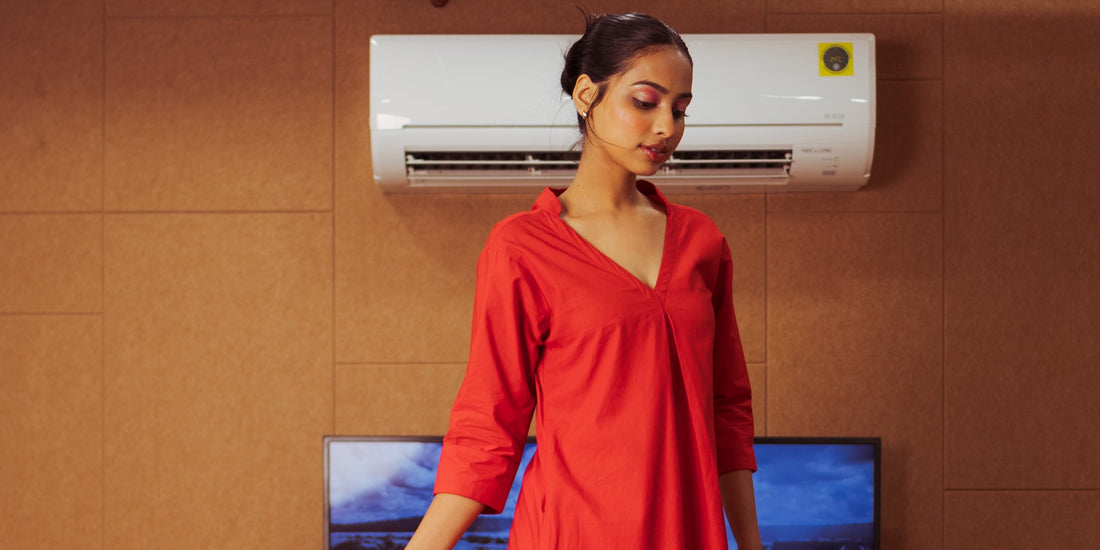
Best Fabrics to Wear in Different Weather Conditions
Share
Choosing the right fabric for your clothing is essential to stay comfortable and stylish in varying weather conditions. Whether you're dressing for summer heat, winter chills, monsoon humidity, or transitional seasons, understanding fabric properties can help you make the best choices. Here’s a guide to the best fabrics for different weather conditions.
1. Hot and Humid Weather: Breathable and Lightweight Fabrics
During hot and humid months, the goal is to stay cool and prevent excessive sweating. The best fabrics for summer are:
Cotton: One of the most breathable fabrics, cotton absorbs moisture and allows airflow, making it perfect for hot climates.
Linen: A lightweight and airy fabric, linen wicks moisture away and dries quickly, ideal for tropical destinations.
Rayon: A semi-synthetic fabric that mimics cotton and linen while being more affordable and wrinkle-resistant.
Chambray: A lightweight alternative to denim that provides breathability without trapping heat.
Best Outfit Choices: Flowy cotton dresses, linen shirts, rayon tops, and chambray shorts.
2. Cold and Winter Weather: Insulating and Warm Fabrics
In winter, the focus is on fabrics that provide insulation and retain body heat. The best winter fabrics include:
Wool: One of the warmest fabrics, wool traps heat and provides insulation against cold temperatures.
Cashmere: A luxurious and ultra-soft wool alternative that provides warmth without added bulk.
Fleece: A synthetic fabric that mimics wool and provides warmth while remaining lightweight.
Flannel: A brushed cotton fabric that offers warmth and coziness.
Best Outfit Choices: Woolen sweaters, cashmere scarves, fleece jackets, and flannel-lined trousers.
3. Rainy and Monsoon Weather: Water-Resistant and Quick-Drying Fabrics
Monsoons bring humidity and frequent rain, so choosing quick-drying and water-resistant fabrics is essential.
Polyester: A synthetic fabric that repels water and dries quickly, making it great for rainy days.
Nylon: Lightweight and water-resistant, nylon is commonly used for raincoats and windbreakers.
Blended Fabrics: Cotton-polyester blends provide breathability while resisting excessive moisture absorption.
Gore-Tex: A high-performance fabric that is waterproof and breathable, ideal for outdoor wear.
Best Outfit Choices: Water-resistant jackets, nylon trousers, quick-dry activewear, and synthetic-blend shirts.
4. Transitional Seasons (Spring & Fall): Versatile and Layered Fabrics
Spring and fall require adaptable fabrics that provide comfort in fluctuating temperatures.
Denim: A sturdy fabric that provides warmth without overheating, perfect for layering.
Cotton Jersey: A soft, stretchy fabric that provides comfort and breathability.
Light Wool: Thinner wool fabrics offer warmth without being too heavy.
Tweed: A textured fabric that provides insulation while remaining stylish.
Best Outfit Choices: Denim jackets, lightweight wool blazers, cotton jersey tops, and tweed skirts.
5. Workout and Activewear: Moisture-Wicking and Stretchable Fabrics
For workouts, sports, and physical activities, fabrics that wick moisture and provide flexibility are ideal.
Spandex/Lycra: Stretchable fabrics that provide comfort and support during movement.
Mesh: A breathable fabric that allows airflow and reduces overheating.
Bamboo Fabric: A natural fabric with antibacterial properties, perfect for sportswear.
Moisture-Wicking Polyester: Designed to keep sweat away from the skin and dry quickly.
Best Outfit Choices: Leggings, moisture-wicking t-shirts, mesh sports bras, and breathable workout shorts.
Conclusion
Choosing the right fabric for different weather conditions ensures comfort, style, and practicality. Whether you’re dressing for the sweltering heat, chilly winters, unpredictable rain, or active workouts, selecting the appropriate fabric makes all the difference. Keep this guide in mind when shopping for your seasonal wardrobe to stay comfortable all year round!
